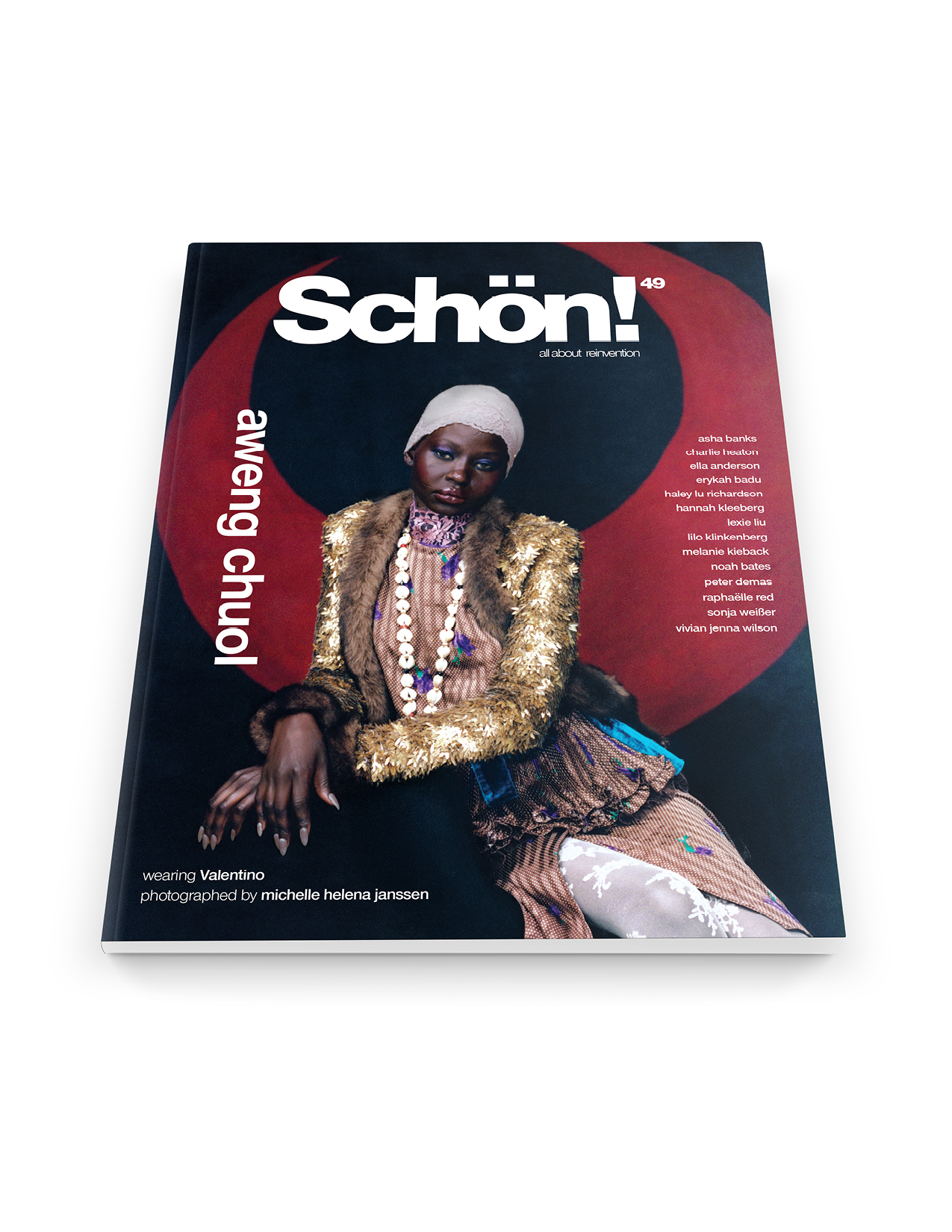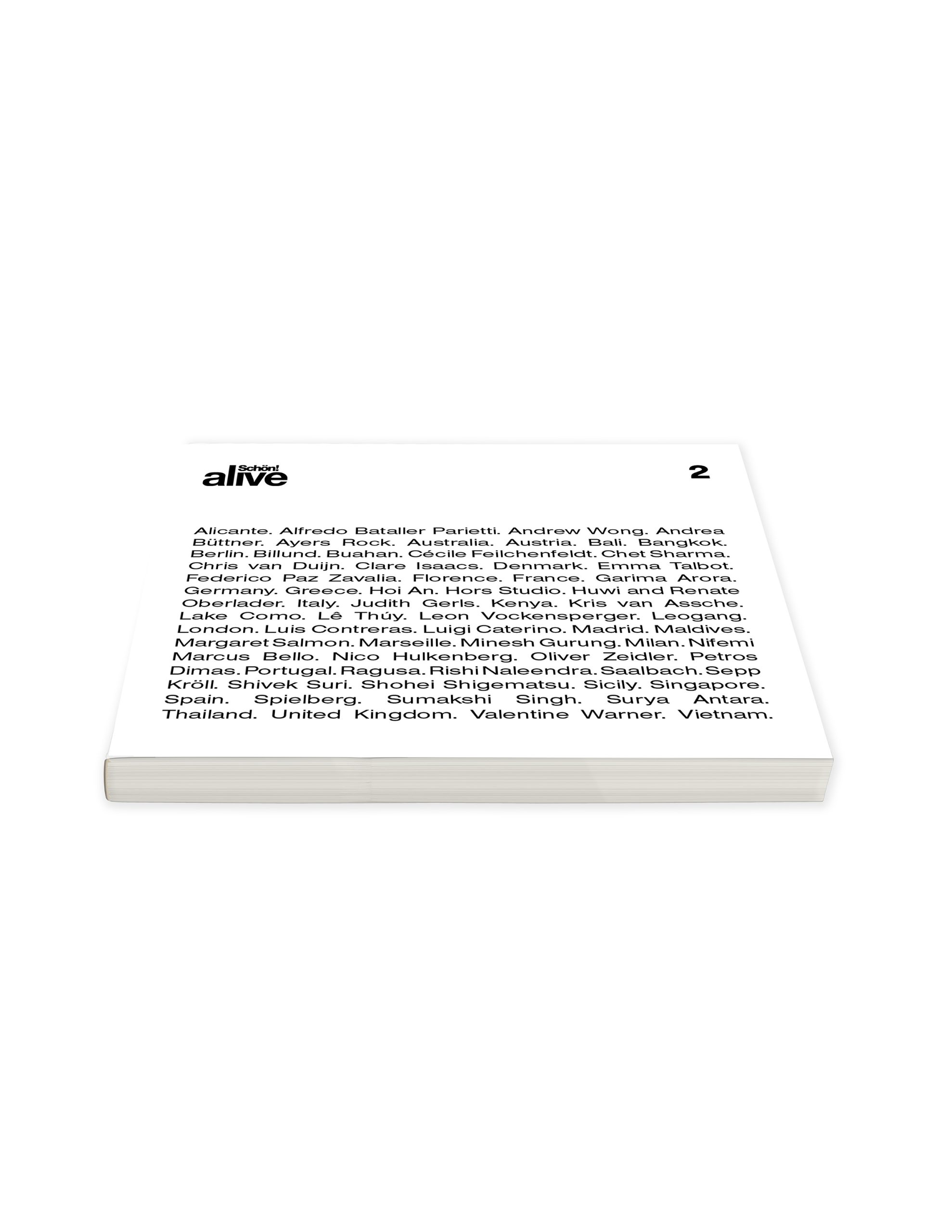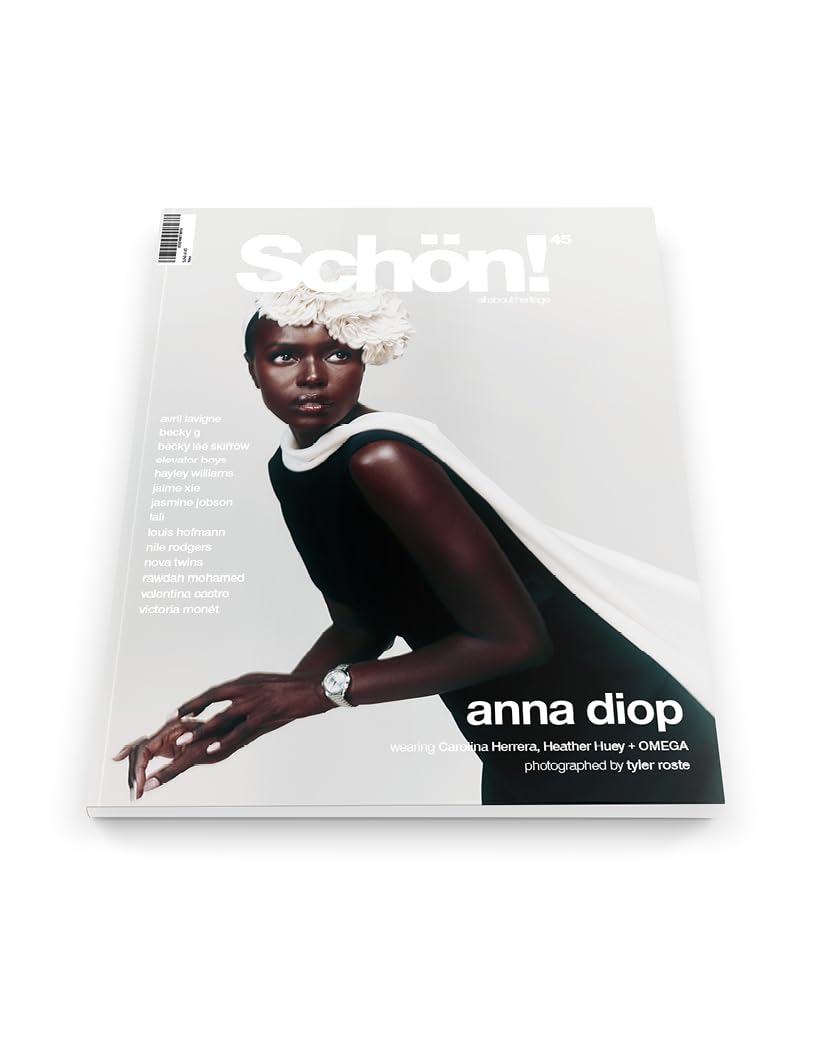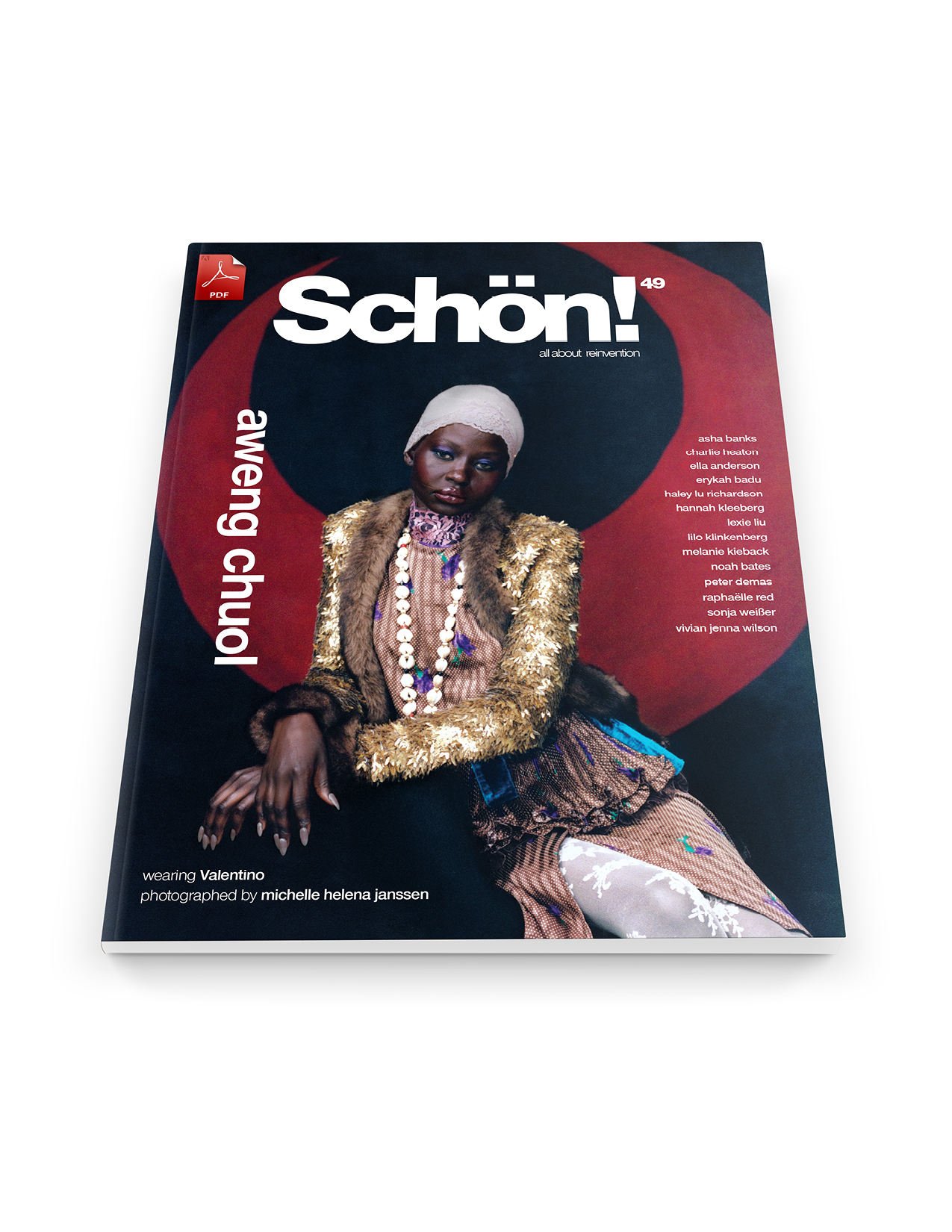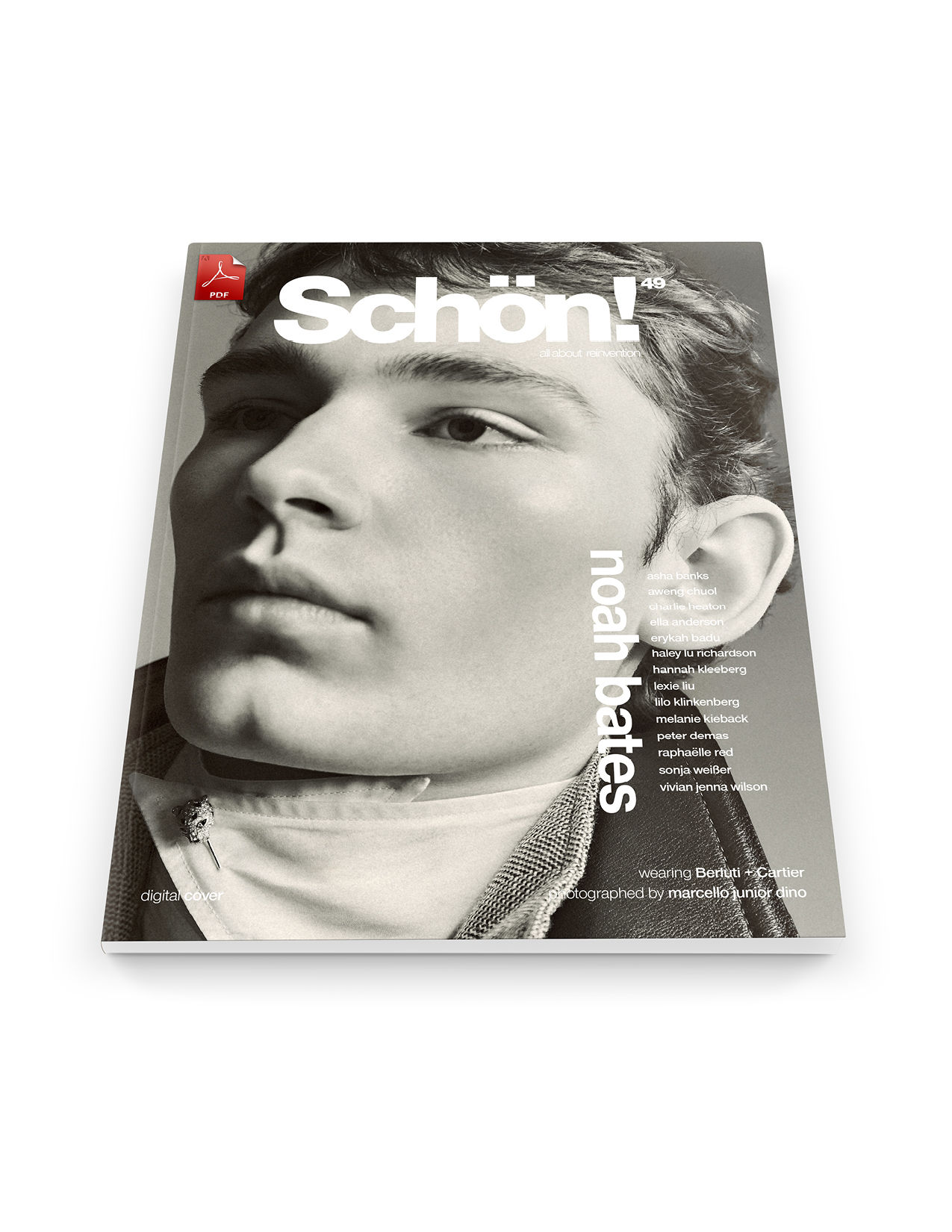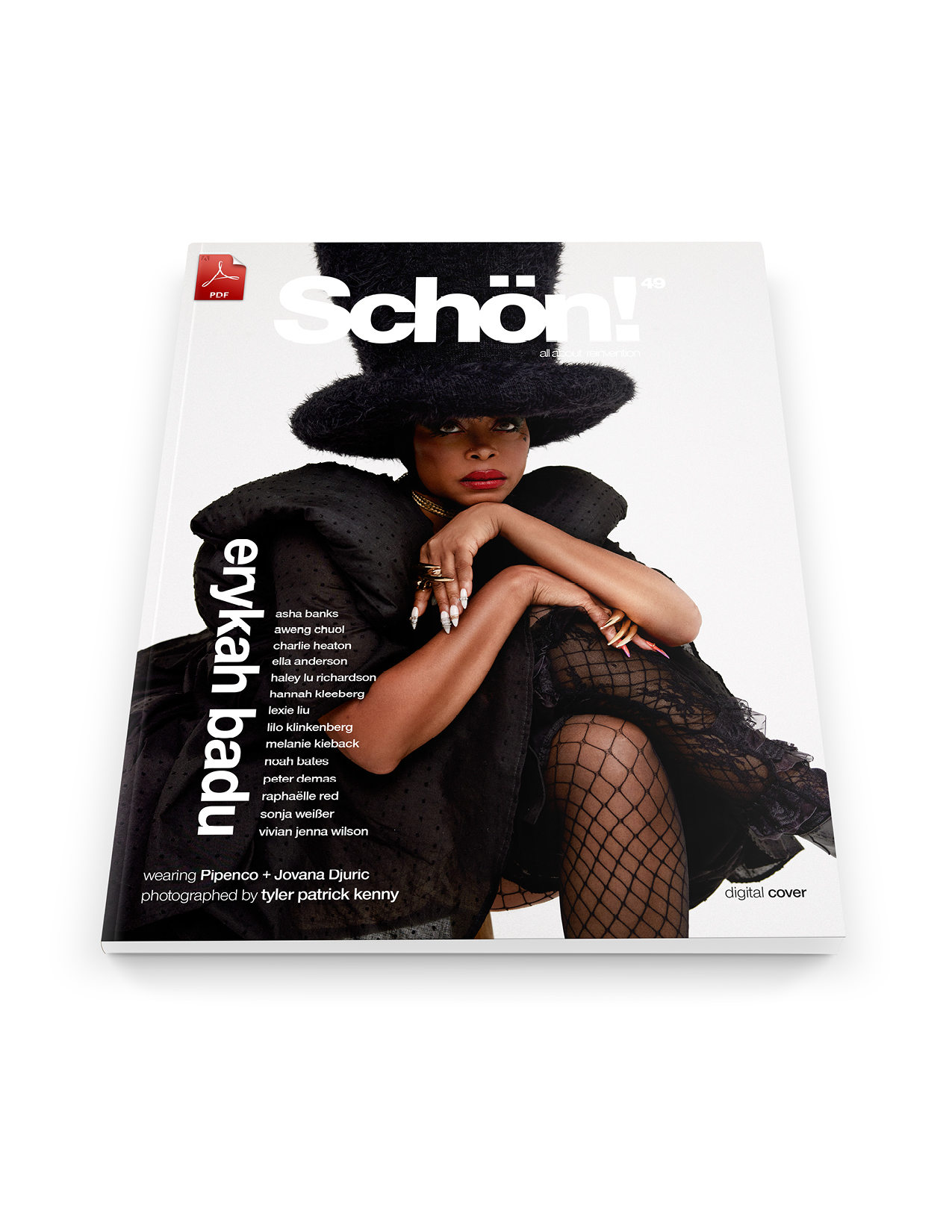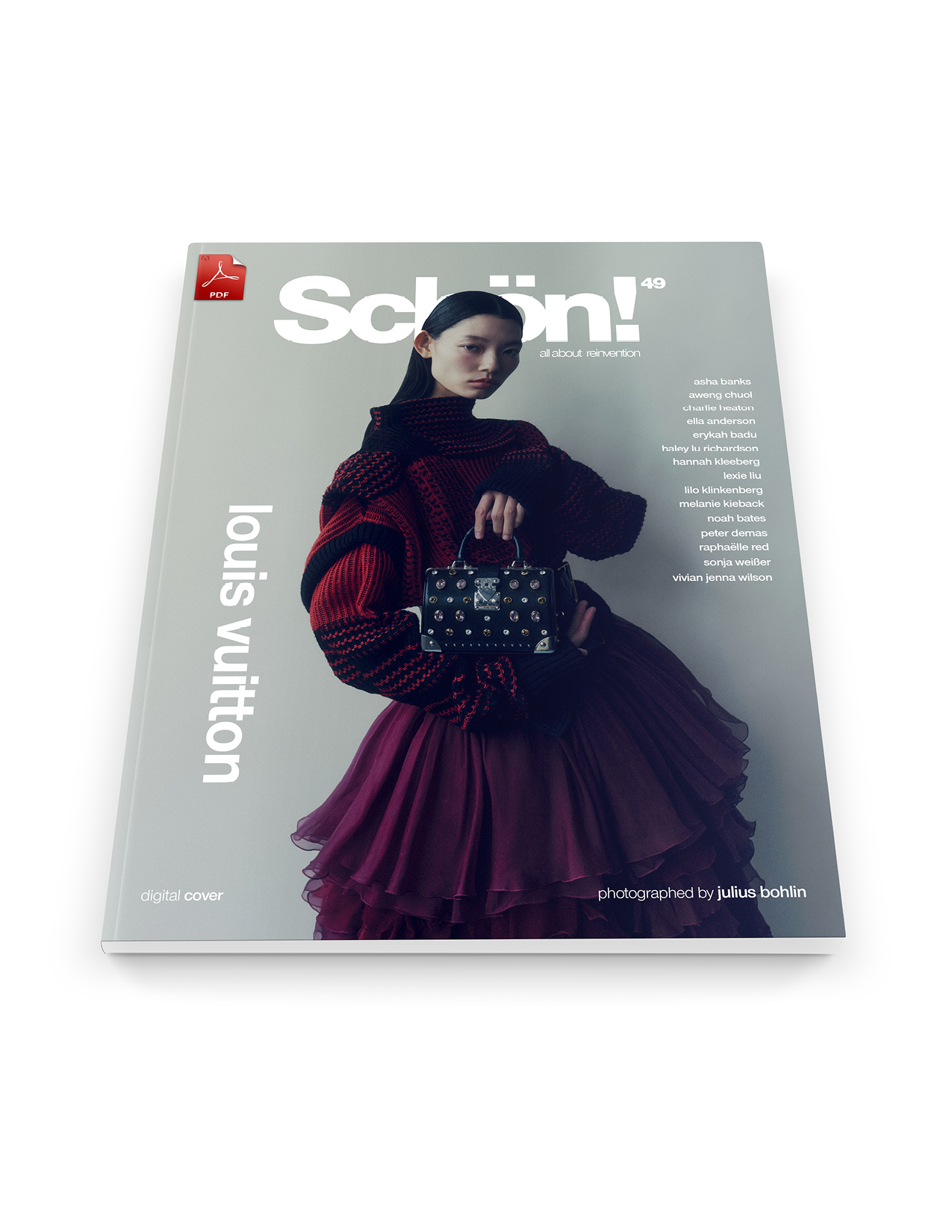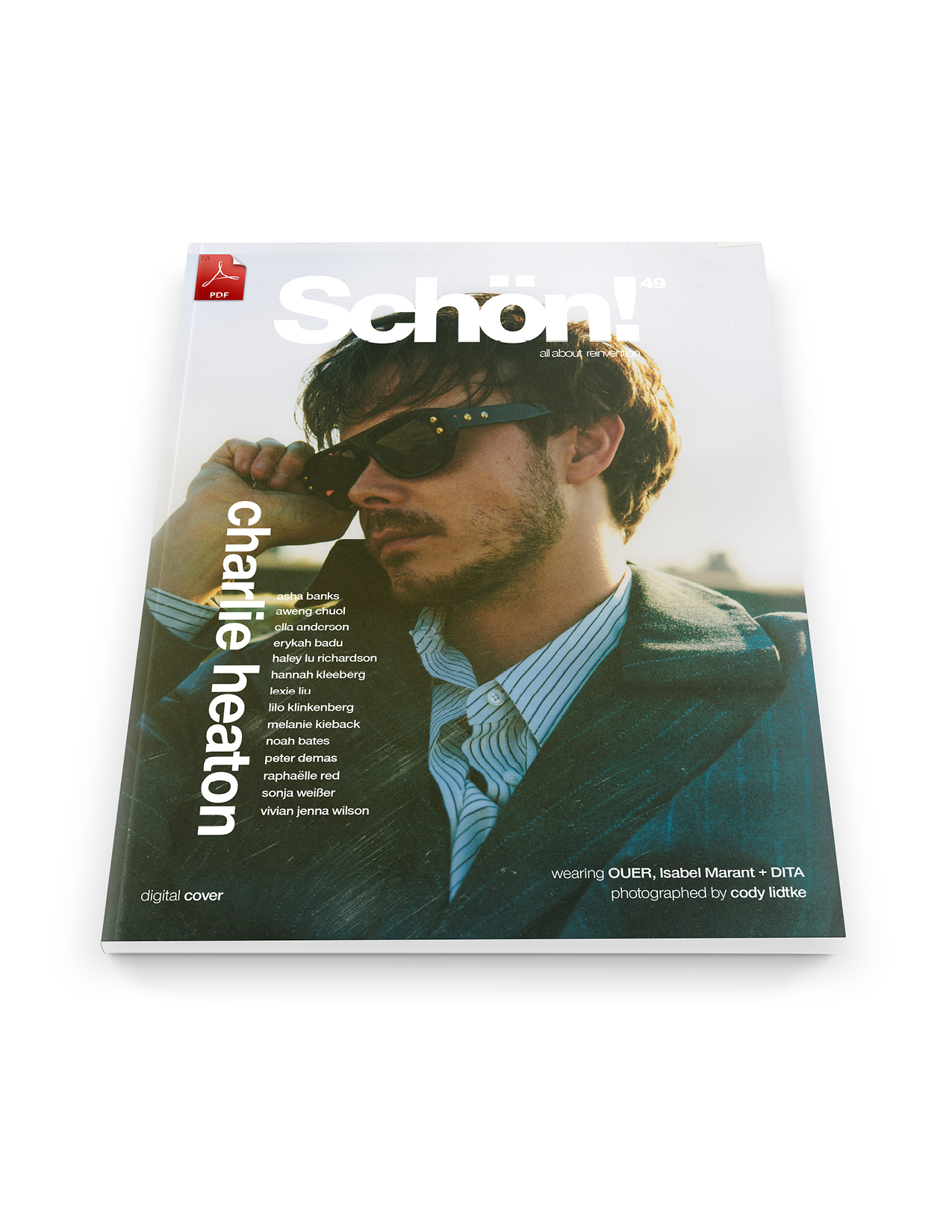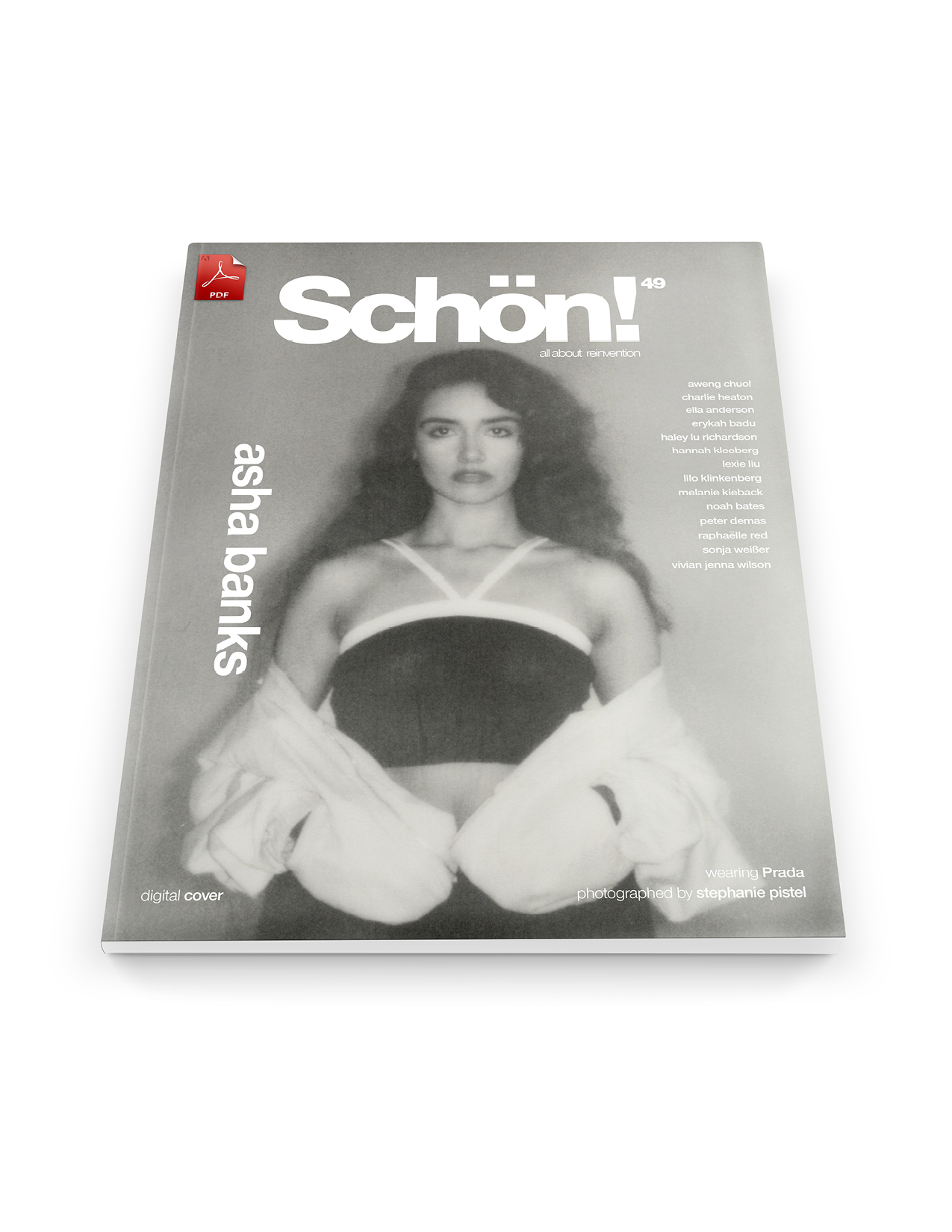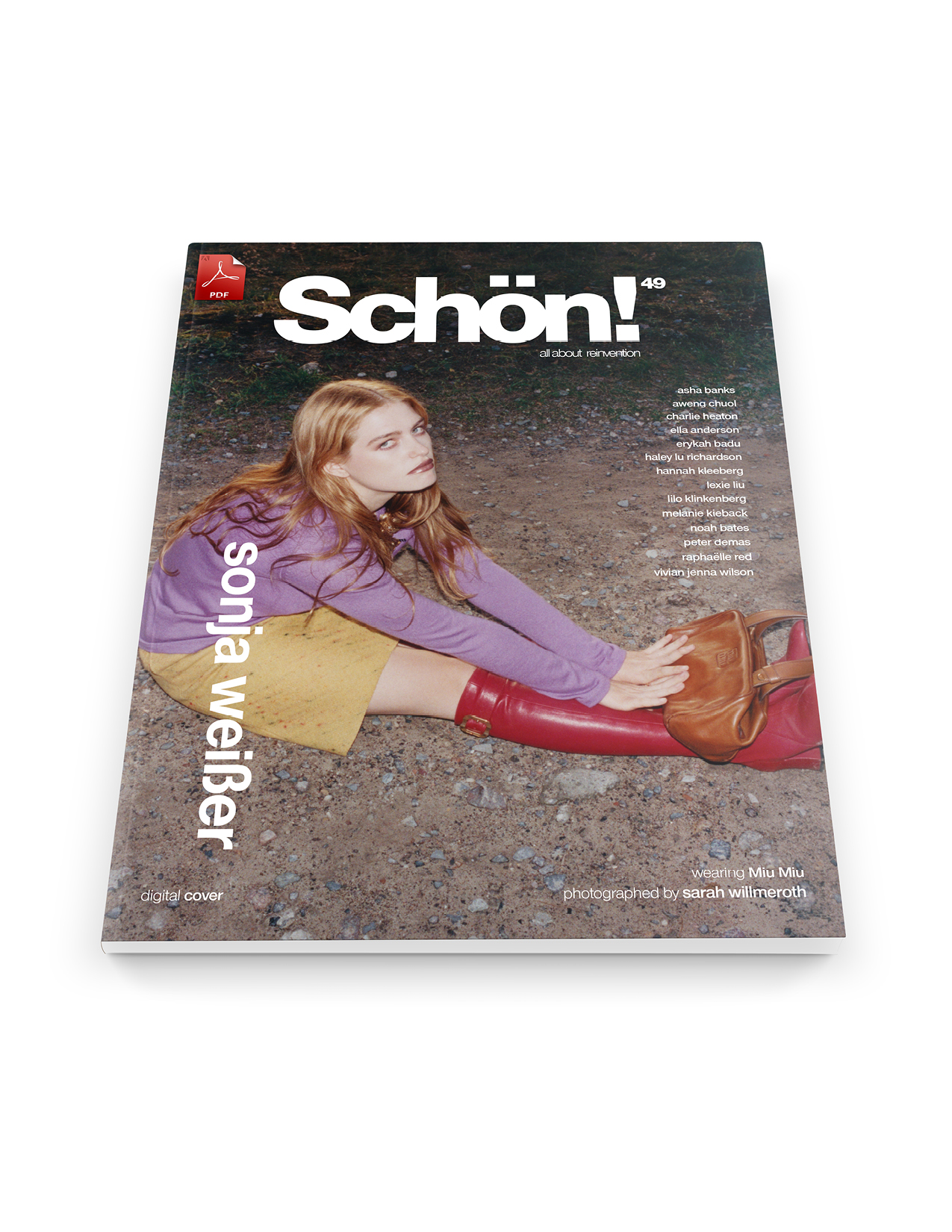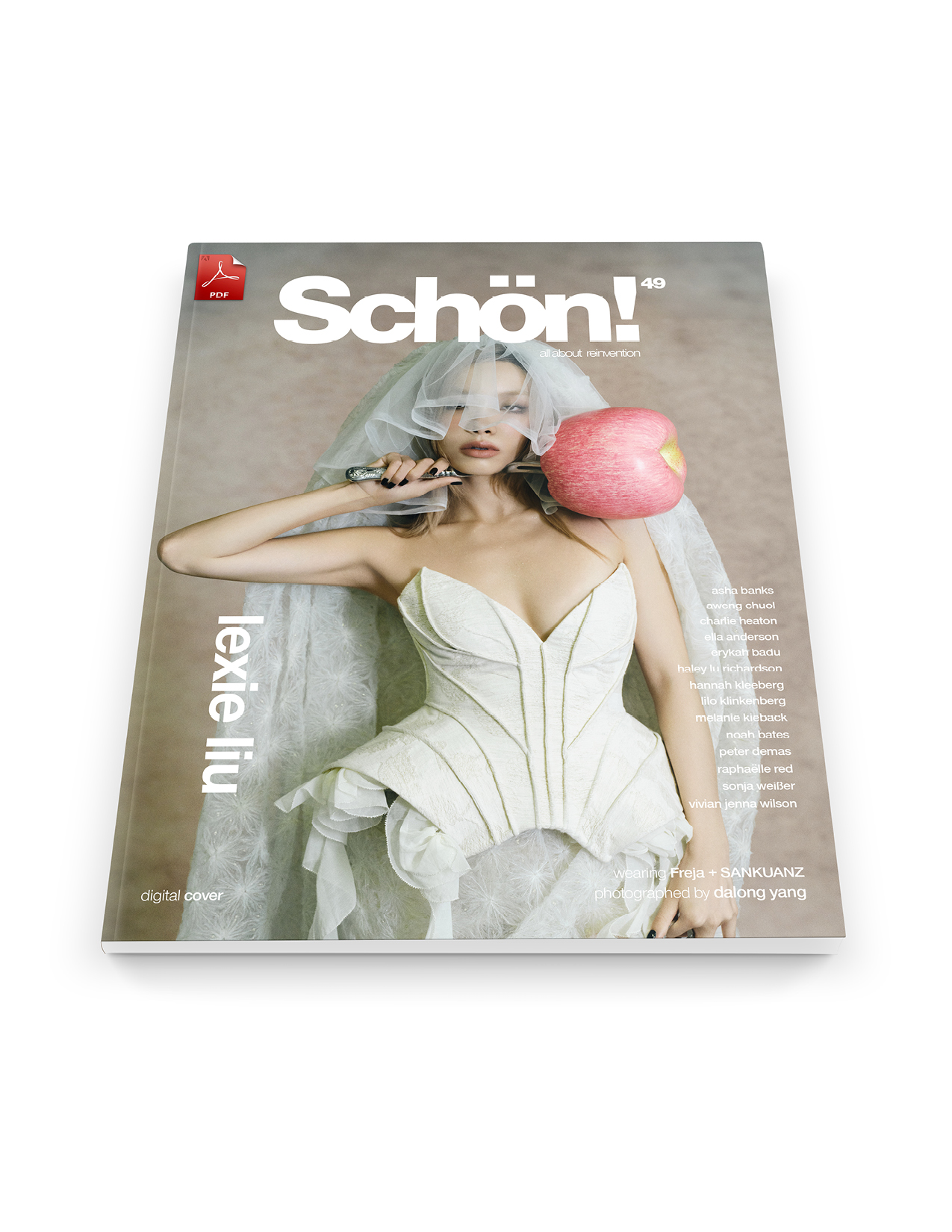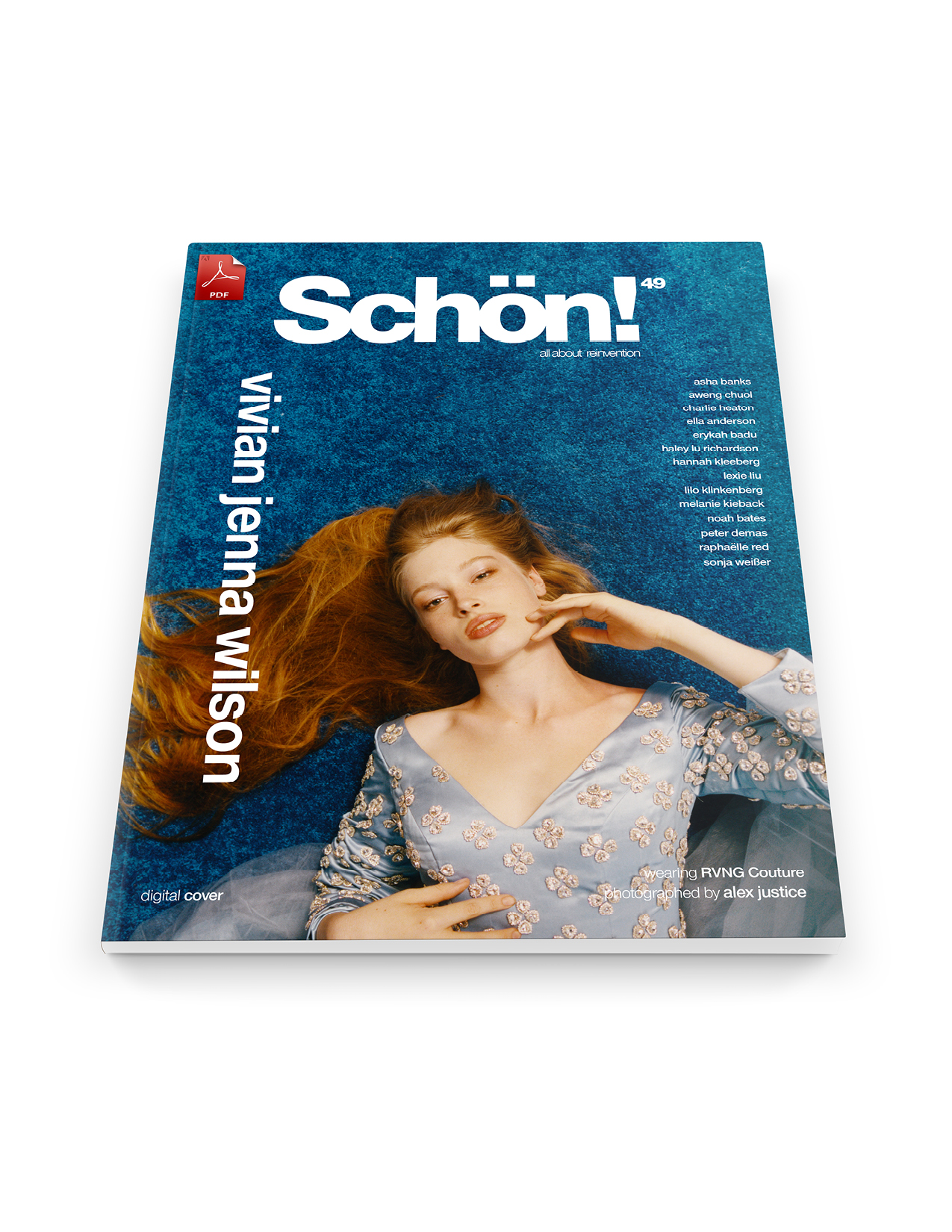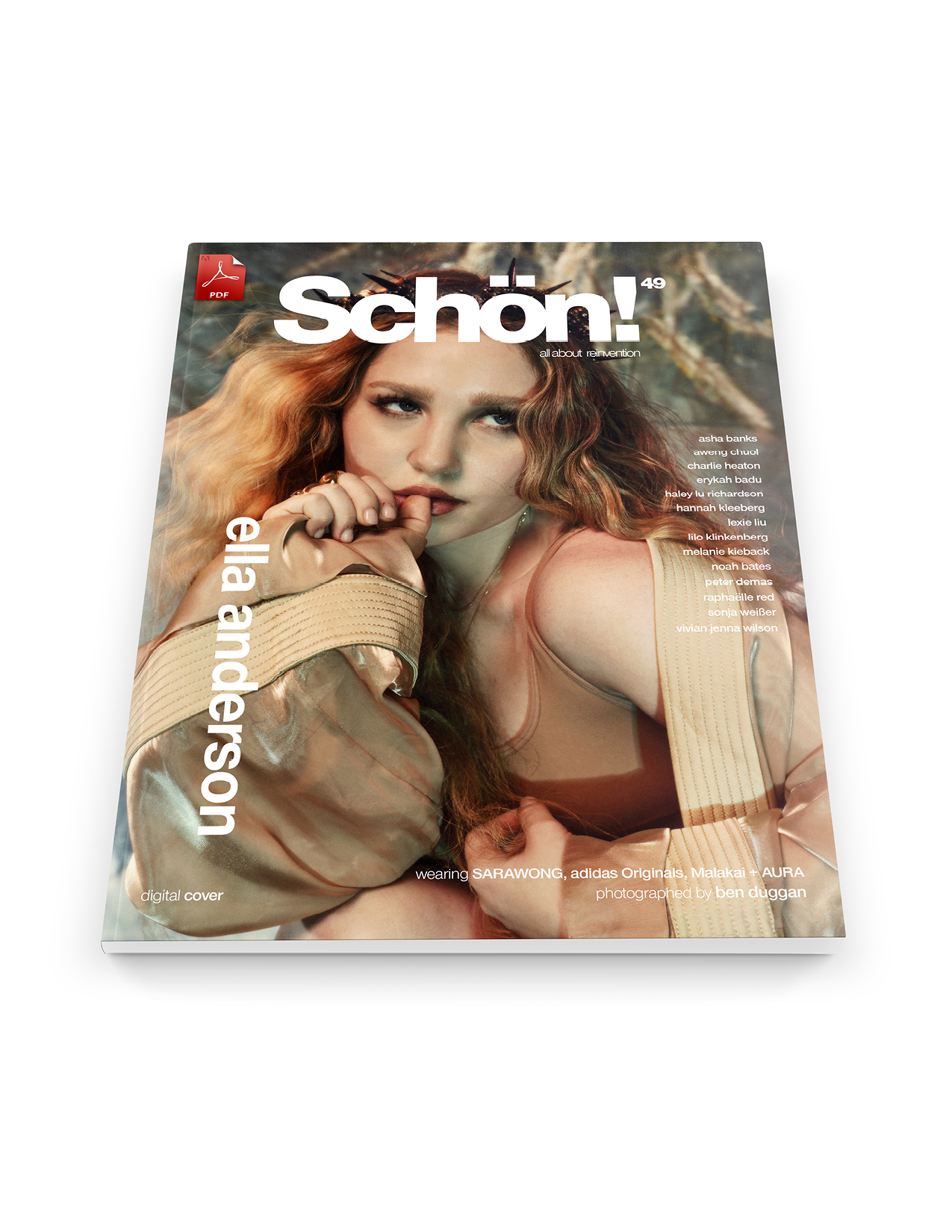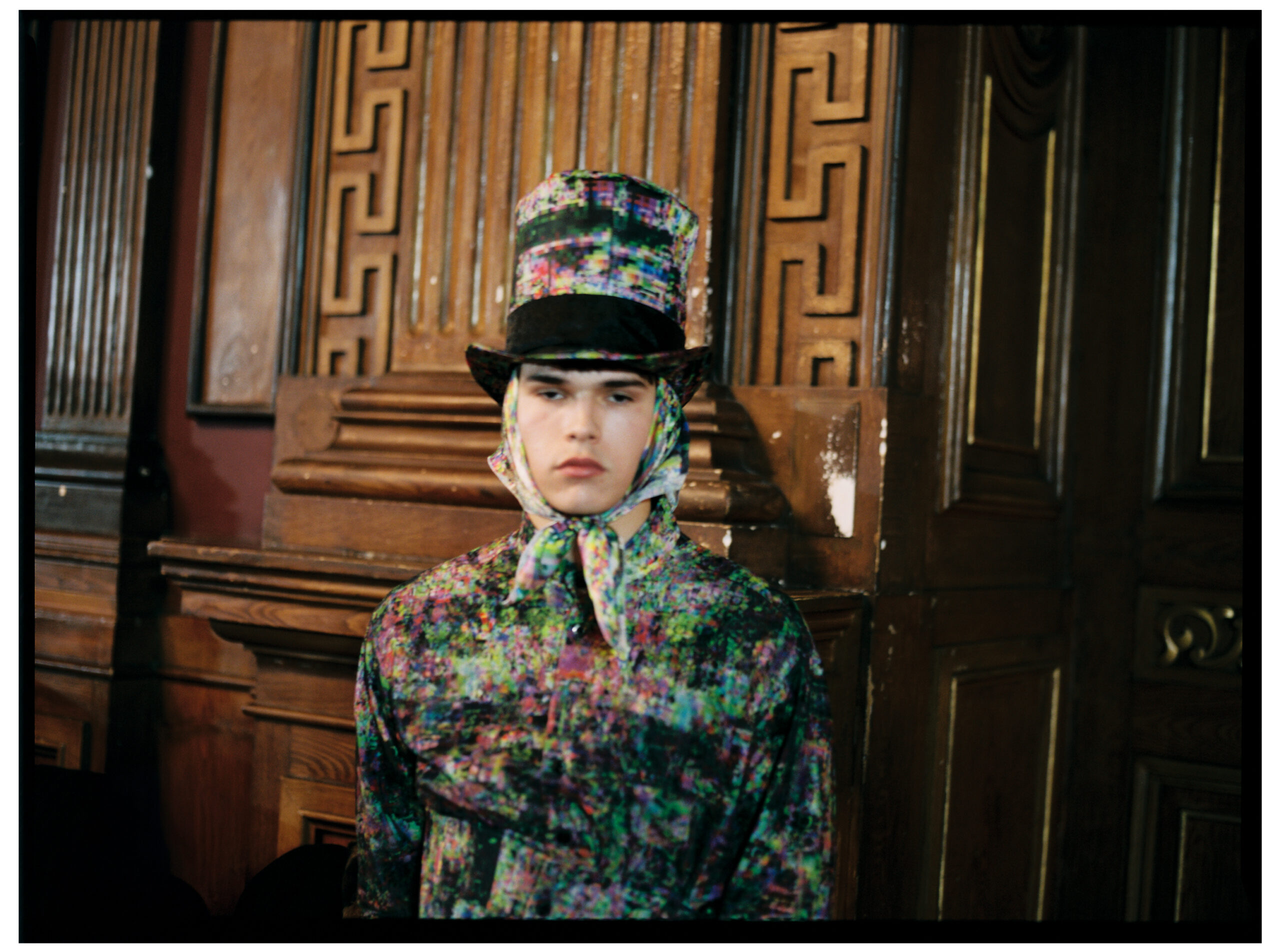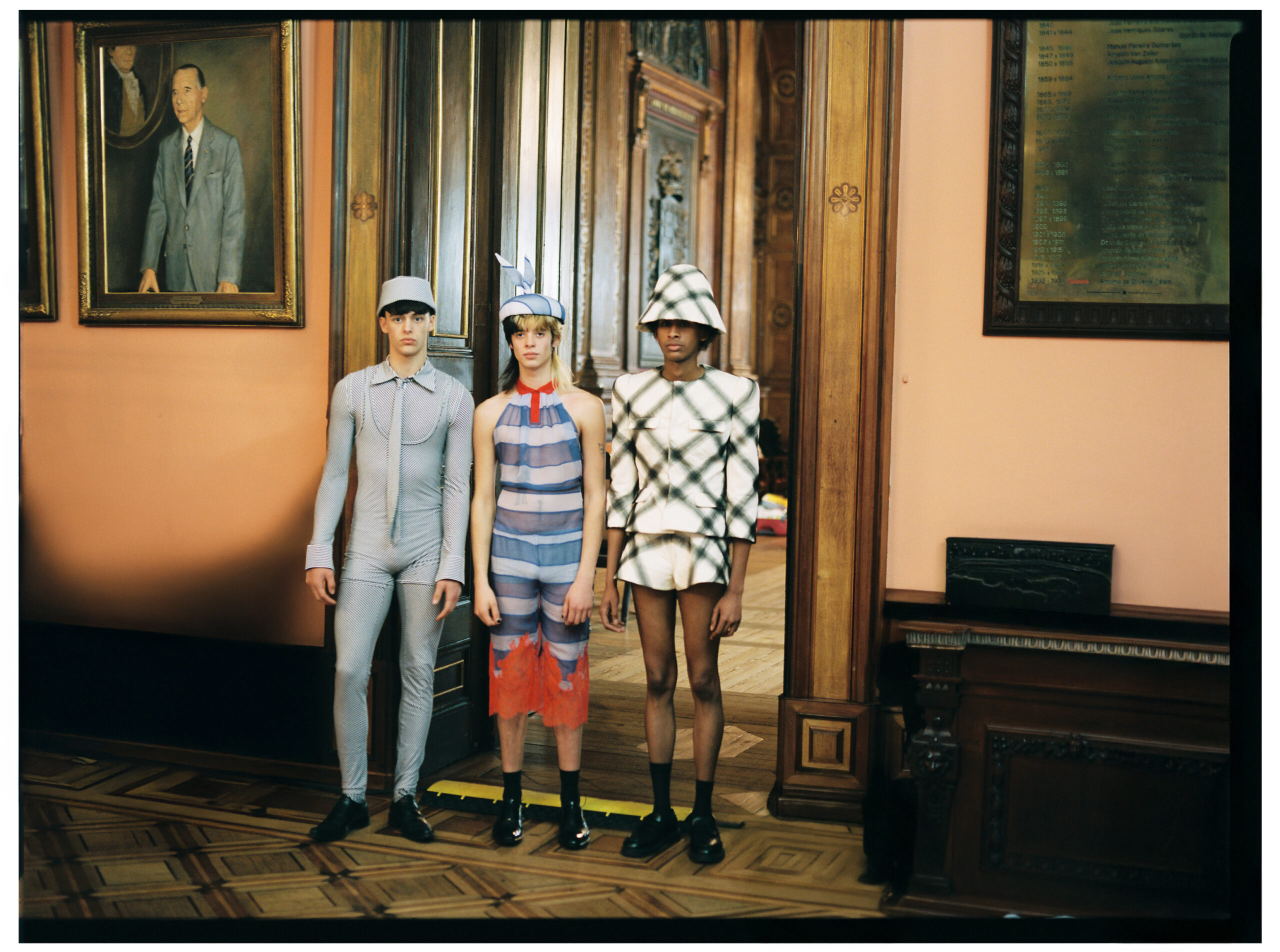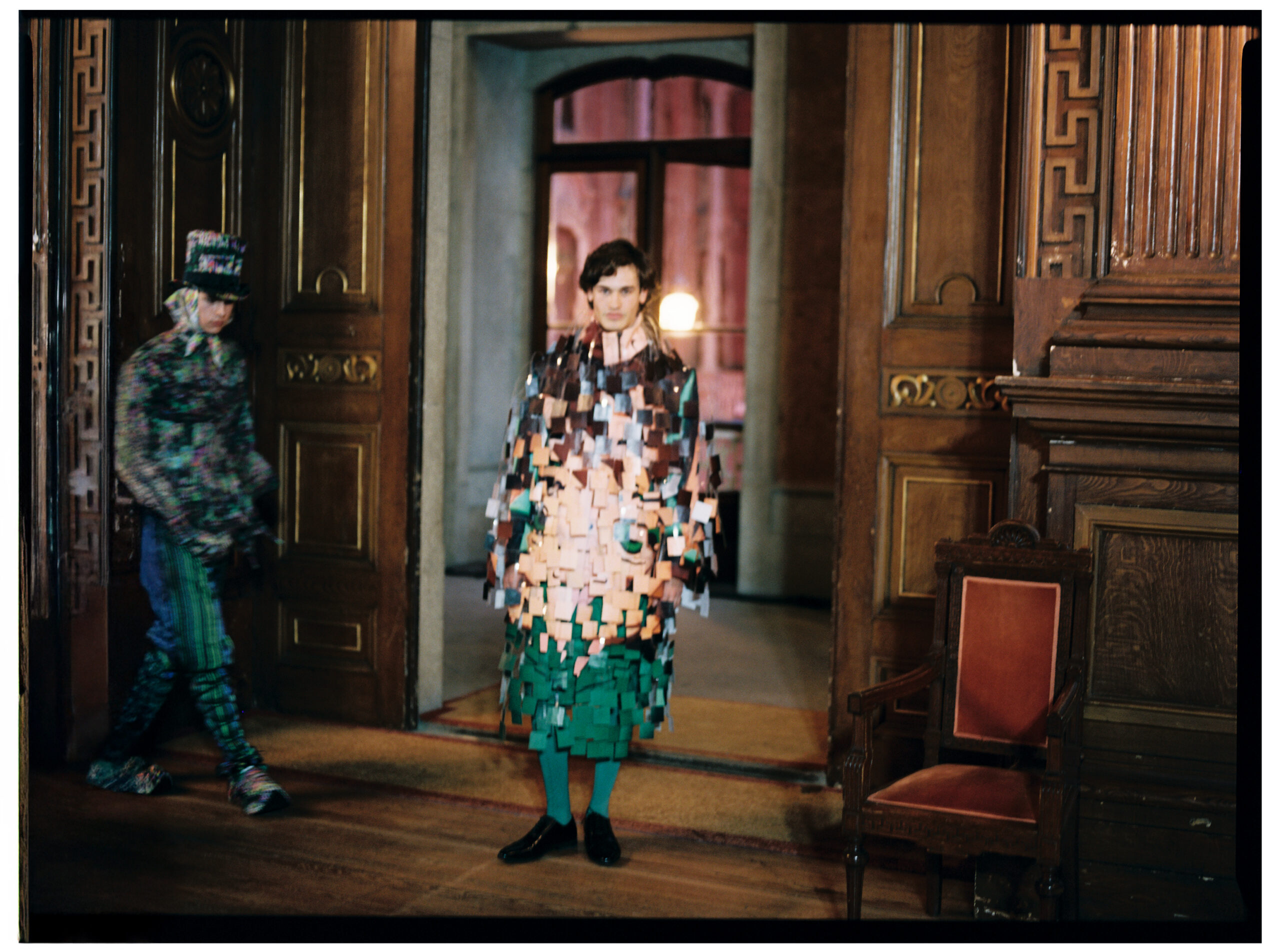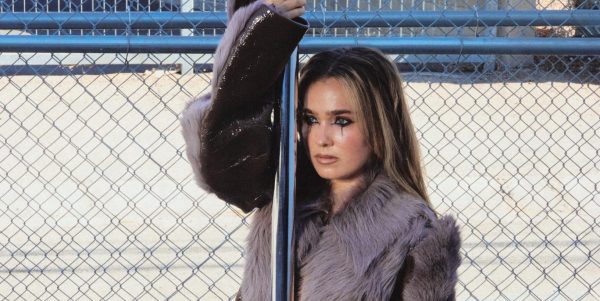
full look. Moon Chang Hybrid Beauty III: RESPONSIBILITY Collection
opposite
full look. Moon Chang Hybrid Beauty III: RESPONSIBILITY Collection
What does it mean to be responsible? It’s something Moon Chang, the visionary and eclectic designer, aims to uncover in her new collection, Hybrid Beauty III: Responsibility. Chang has built a brand where dualism and beauty vs. ugliness are central themes. The brand’s mission is clear: to foster a lifestyle that champions environmental consciousness and animal rights. By eschewing toxic, non-recycled materials, and avoiding animal leather and furs, Moon Chang aims to redefine beauty and fashion through a lens of sustainability.
The upcoming collection for 2025, titled Hybrid Beauty III: Responsibility, delves deeper into Moon Chang’s philosophy. Part of the ongoing Hybrid Beauty series, which explores fashion as a remedy for mental health struggles, this collection focuses on “cuteness in responsibility.” It reflects Moon Chang’s personal journey through PTSD and her belief in using cuteness as a survival mechanism. This new line emphasizes sustainability and ethical practices, featuring zero-waste designs achieved by upcycling fabric waste from ready-to-wear pieces into couture creations. Moon Chang’s innovative approach and her dedication to merging high fashion with ethical responsibility position her brand as a leader in the sustainable fashion movement, promising a future where beauty and responsibility coexist harmoniously.
Schön! changes with Moon Chang about the forthcoming collection, what “cuteness in responsibility” means, and more.
Moon, your collection “Hybrid Beauty” blends fashion with mental health themes. Can you tell us how your personal experience with PTSD influenced the creation of this concept?
PTSD and mental health is a very heavy topic for fashion. I chose PTSD as the main concept of my collections because I found a hope that fashion has a healing power. This journey started with my personal experience being a victim of the fashion industry, fashion overcame my health. I realized this is not just my experience, it is for everyone who is in the fashion industry, moreover, people living in this society. I challenged myself to solve mental health from the perspective of a fashion designer. Therefore, my brand, Moon Chang, has a big overall theme, called Hybrid Beauty, which uses “fashion as the treatment of mental health”, using “vulnerability and cuteness as the protective mechanism to fight against deadly stressful conditions in modern society.
You describe “vulnerability and cuteness” as a protective mechanism against stress. How do you translate these emotional concepts into tangible designs?
I believe “vulnerability and cuteness” are powerful, and use them as a protective mechanism by revealing them externally to the surface. People mostly hide their vulnerability, and also instead of being cute, they choose to be strong. I reinterpreted the traditional couture techniques by combining streetwear and sportswear by using handmade flowers, ribbons, and ruffles to empower the concept of aesthetic functionality. My designs seem cute and beautiful, but behind them, they are functional, durable, and empower the wearer.

full look. Moon Chang Hybrid Beauty III: RESPONSIBILITY Collection
opposite
full look. Moon Chang Hybrid Beauty III: RESPONSIBILITY Collection
Your collection is divided into seasons, each exploring different psychological stages. How do you decide which stage to focus on in each season, and how do they all connect to the overarching story of “Hybrid Beauty”?
Yes, the psychological stages come from scientific research on the brain recovery process as well as my personal experience. For example, Hybrid Beauty II: Flashback faces the shadow of overcoming trauma, it seems you overcome, but it keeps bringing the flashback like a nightmare. Ironically, being vulnerable and facing trauma is another way to overcome. The distinctive concept from each season shows the different stages of psychological and aesthetic perception, but it is a continuous story of the fairytale nightmare.
“Beauty v.s. Ugliness” and “Flashback” are themes in earlier seasons of your work. How does “Responsibility” in Hybrid Beauty III build upon these ideas? How does the idea of “cuteness in responsibility” challenge or transform traditional perceptions of fashion and beauty?
This new collection, Hybrid Beauty III: Responsibility has evolved into the idea of “cuteness in responsibility” as the protective mechanism. Every cute thing that exists comes with a sense of responsibility. I wanted to challenge the stereotypes and standards that are already established in the industry, which is doing anything to be beautiful for profit. Even cuteness is not something to be taken for granted. It’s a responsibility.

full look. Moon Chang Hybrid Beauty III: RESPONSIBILITY Collection
opposite
full look. Moon Chang Hybrid Beauty III: RESPONSIBILITY Collection
Your work emphasizes sustainability and ethical practices. How did your personal journey with mental health intersect with your commitment to a more sustainable fashion industry?
Fashion should not overcome health, and especially in the fashion industry, I saw many fashion professionals struggle due to the toxic environment, including myself. However, I still love fashion, and cannot stop working on it, so I promised myself that I do not want anyone to get hurt by my fashion world. So this was a natural transition that I made my commitment to sustainability.
Can you explain the process behind upcycling fabric wastage into your couture collections, and why this is so important to your design philosophy?
This collection was inspired by my sustainability initiation of the brand, which strives to cut excessive waste and promote sustainable, ethical business practices through circular design and production. By combining both couture and ready-to-wear collections, I produced a fully zero-waste collection by upcycling all the fabric wastage from ready-to-wear production and turning wastage into cute elements, such as flowers, ribbons, and ruffles for the couture.
In “Hybrid Beauty III,” you incorporate your dog Venus’ face and flowers from the 2019 collection into the prints. What significance do these elements hold for you personally, and how do they tie into the overall message of responsibility?
As always, I want to create the boundless beauty for coexistence with humans, animals, and nature, and my dog Venus is my muse, but at the same time, I feel countless responsibilities being a dog mom. Taking care of life is not easy. Even though there is a sense of responsibility, we still love them because we are exchanging love between life, humans, animals and nature.

full look. Moon Chang Hybrid Beauty III: RESPONSIBILITY Collection
opposite
full look. Moon Chang Hybrid Beauty III: RESPONSIBILITY Collection
You saved misprinted fabrics that were initially considered waste. Can you talk about the emotional impact of rescuing these materials and how it reflects the larger theme of responsibility in fashion?
Theoretically, clothing has no life, as it doesn’t breathe. But in the sense of mentality, I believe there is a life of fashion, and it is my responsibility to make aesthetic, emotional and physical longevity for all the living things on this earth. Fashion always wants new and fresh things, but ironically, I reused my deadstock from my first Hybrid Beauty collection, 2019, handmade digital prints of my dog, Venus and flowers. Behind the scenes of this deadstock, the fabric print factory tried to send 30 yards of fabrics to the factory’s disposal site without notification, which they considered a flaw due to misprinting due to colour differences. But, I rescued all of them for the future, and finally reused them for this collection, Hybrid Beauty III: Responsibility.
What does “functional decoration” mean in the context of this collection, and how does it serve as a tool to represent responsibility and sustainability?
I want my decoration to be as functional and responsible as the clothes for the wearer. I do not use meaningless decorations, and responsibility is given the moment a design element is selected. For example, the role of the ribbon is given to fit the body perfectly, hold the shape, and even serve as a pocket. Moreover, it also gives cuteness and confidence to the wearer.

full look. Moon Chang Hybrid Beauty III: RESPONSIBILITY Collection
opposite
full look. Moon Chang Hybrid Beauty III: RESPONSIBILITY Collection
Your collection challenges the traditional boundaries of “beauty vs. ugliness” and “right vs. wrong.” Can you explain how this approach has evolved throughout the “Hybrid Beauty” series?
A few years ago, I accidentally burnt the cotton candy excessively, and the colour pink became black, the roundy and puffy shape became liquid and then stiff, the texture became soft to hard, and the sweet flavours became stinky. I collected the stinky black liquid and moulded and repackaged it again into the heart-shaped candy. I felt this is the way I wanted to be, not just being cute or soft, I must embrace the dark, ugly, and serious side, to show who I am, who we are and what will be, as well as the trauma. Interestingly, this cotton candy memory gave me the solution to the relationships between “beauty vs. ugliness” and “right vs. wrong.” I wanted to criticize the current fashion industry; even a small mistake results in the entire discard. I wanted to show there are no boundaries of “Beauty v.s. Ugliness, and Right v.s. Wrong”, there is only responsibility for what you create.
How do traditional couture techniques like ribbons, ruffles, and flowers evolve in this collection to emphasize both brutal and delicate aspects of responsibility?
I reinterpreted the cuteness to visualize the trauma, I applied traditional but unusual techniques to ribbons, ruffles, and flowers, such as uglifying, destroying, folding, slashing and unbalancing. Countless small cute elements made out of fabric wastage were built up as oversized couture lines to show the endless efforts to be responsible. This vicariously implicates the challenge of recovering from the numerous wastes of the present industry.

full look. Moon Chang Hybrid Beauty III: RESPONSIBILITY Collection
opposite
full look. Moon Chang Hybrid Beauty III: RESPONSIBILITY Collection
You mention that small efforts can create a “butterfly effect” toward sustainability. How do you see this idea of interconnectedness shaping the future of fashion?
The speed of mass production and waste disposal are extremely fast, however, I strongly believe there is a hope that if we put small effort daily, and weekly, toward a better present and future, it would change. The way I made my sustainable couture line, we all will build our society by converging countless small elements into oversized couture to express the responsibility and interconnection to bring butterfly effects, endless small efforts will result in sustainable goal success.
What message do you hope people take away from” Hybrid Beauty III: Responsibility,” and how can consumers apply the principles of responsibility and longevity in their own fashion choices?
In terms of fashion, I want a consumer to be a customer as fashion is not for consuming. I kindly suggest that you have emotional longevity with your clothes, if you think fashion and clothes have life, it would be difficult to abandon them. Thankfully, my customers and fans of my brand understand the brand value and aim for a sustainable lifestyle, and sending thank you letters to my brand’s social media and email, which really encourages and makes me to keep challenging myself to be sustainable.
Learn more about Moon Chang’s latest collection at moon-chang.com.
creative direction + fashion design. Moon Chang
photography. Venus Chang
model. Faith Vaugh




